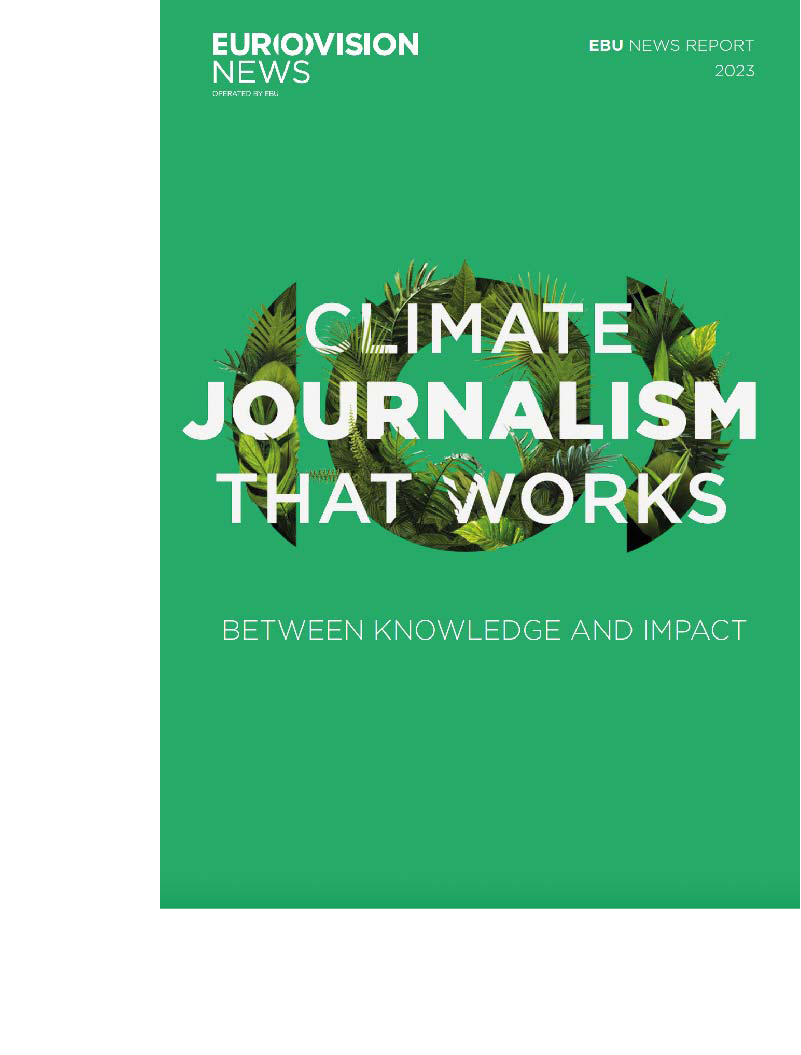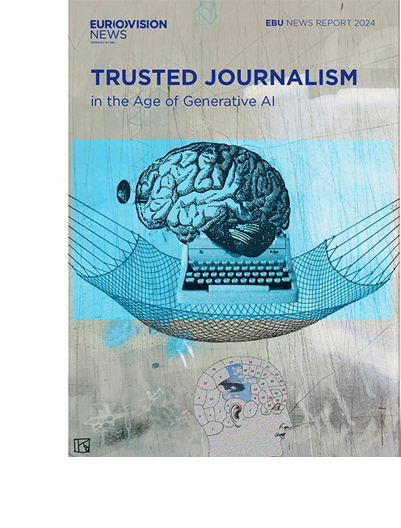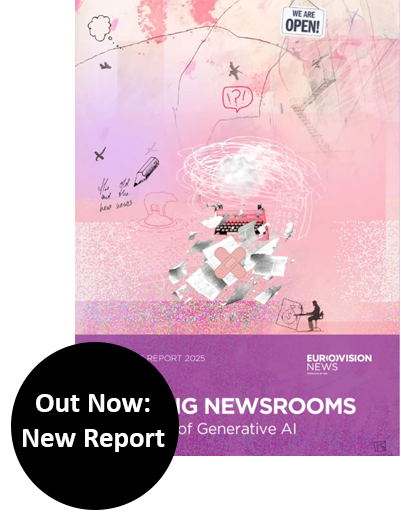The BBC’s Director of Generative AI talks about the approach of his organization to developing AI tools, experiences with their usage and the rampant inaccuracies AI assistants produce – and what is needed to remedy them. This interview was conducted for the EBU News Report “Leading Newsrooms in the Age of Generative AI” that will be published by the European Broadcasting Union.
BBC research recently revealed disturbing inaccuracies when AI agents provided news content and drew on BBC material. About every second piece had issues. Did you expect this?
We expected to see a degree of inaccuracy, but perhaps not as high as we found. We were also interested in the range of different errors where AI assistants struggle including factual errors, but also lack of context, and the conflation of opinion and fact.
It was also interesting that none of the four assistants that we looked at – ChatGPT, Copilot, Gemini, and Perplexity – were much better or worse than any of the others, which suggests that there is an issue with the underlying technology.
Has this outcome changed your view on AI as a tool for journalism?
With respect to our own use of AI, it demonstrates the need to be aware of the limitations of AI tools.
We’re being conservative about the use of generative AI tools in the newsroom and our internal guidance is that generative AI should not be used directly for creating content for news, current affairs or factual content.
But we have identified specific use cases like summaries and reformatting that we think can bring real value.
We are not currently allowing third parties to scrape our content to be included in AI applications. We allowed ChatGPT and the other AI assistants to access our site solely for the purpose of this research. But, as our findings show, making content available can lead to distortion of that content.
You emphasised working with the AI platforms was critical to tackle this challenge. Will you implement internal consequences, too?
Generative AI poses a new challenge – because AI is being used by third parties to create content, like summaries of the news.
I think this new intersection of technology and content will require close working between publishers and technology companies to both help ensure the accuracy of content but also to make the most of the immense potential of generative AI technology.
So, you think the industry should have more self-confidence?
Publishers, and the creative and media industries more broadly, are critical to ensuring generative AI is used responsibly. The two sectors – AI and creative industries – can work together positively, combining editorial expertise and understanding of the audience with the technology itself.
More broadly, the media industry should develop an industry position – what it thinks on key issues. The EBU can be a really helpful part of that. In the UK, regulators like Ofcom are interested in the AI space.
We need a constructive conversation on how we collectively make sure that our information ecosystem is robust and trusted. The media sector is central to that.
On the research, we will repeat the study, hopefully including other newsrooms. Because I’m fascinated to see two things: Do the assistants’ performances change over time? And do newsrooms of smaller languages see the same issues or maybe more?
Do you think the media industry in general is behaving responsibly towards AI? Or what do you observe when you look outside of your BBC world?
On the whole yes, and it’s great to see different perspective as well as areas of common interest. For example, I think everybody is now looking at experiences like chat assistants.
There’s so much to do it would be fantastic to identify common priorities across the EBU group, because working on AI can be hard and costly and where we can collaborate we should.
That said, we have seen some pretty high-profile mistakes in the industry – certainly in the first 12 to 18 months after ChatGPT launched – and excitement occasionally outpaced responsible use.
It’s also very helpful to see other organizations testing some of the boundaries because it helps us and other public service media organizations calibrate where we are and what we should be doing.
There are huge hopes in the industry to use generative AI to make journalism more inclusive, transcend format boundaries to attract different audiences. Are these hopes justified?
I’m pretty bullish. The critical thing is that we stay totally aligned to our mission, our standards, and our values. AI changes a lot, but what it doesn’t change is who we are and what we’re here to do.
One of the pilots that we’re looking at how to scale is taking audio content, in this example, a football broadcast, and using AI to transcribe and create a summary and then a live text page.
Live text updates and pages on football games are incredibly popular with our audiences, but currently there’s only so many games we can create a live page for. The ability to use AI to scale that so we can provide a live text page for every football game we cover on radio would be amazing.
One of the other things that we’re doing is going to the next level with our own BBC large language model that reflects the BBC style and standards. This approach to constitutional AI is really exciting. It’s being led out of the BBC’s R&D team – we’re incredibly lucky to have them.
Do you have anything fully implemented yet?
The approach that we’ve taken with generative AI is to do it in stages. In a number of areas, like the football example, we are starting small with working, tactical solutions that we can increase the use of while we work on productionised versions in parallel.
Another example is using AI to create subtitles on BBC Sounds. Again, here we’ve got an interim solution that we will use to provide more subtitles to programmes while in parallel we create a productionised version that is that is much more robust and easier to scale across all audio.
A key consideration is creating capabilities that can work across multiple use cases not just one, and that takes time.
What is your position towards labelling?
We have a very clear position: We will label the use of AI where there is any risk that the audience might be materially misled.
This means any AI output that could be mistaken for real is clearly labelled. This is particularly important in news where we will also be transparent about where AI has a material or significant impact on the content or in its production – for example if an article is translated using AI.
We’re being conservative because the trust of our audience is critical.
What’s the internal mood towards AI? The BBC is a huge organization, and you are probably working in an AI bubble. But do you have any feel for how people are coming on board?
One of the key parts of my role is speaking to teams and divisions and explaining what AI is and isn’t and the BBC’s approach.
Over the last 12 months, we’ve seen a significant increase in uptake of AI tools like Microsoft Copilot and many staff are positive about how AI can help them in their day-to-day work.
There are of course lots of questions and concerns, particularly as things move quickly in AI.
A key thing is encouraging staff to play with the tools we have so they can understand the opportunities and limitations. Things like Microsoft Copilot are now available across the business, also Adobe Firefly, GitHub Copilot, very shortly ChatGPT.
But it’s important we get the balance right and listen carefully to those who have concerns about the use of AI.
We are proceeding very carefully because at the heart of the BBC is creativity and human-led journalism with very high standards of editorial. We are not going to put that at risk.
What’s not talked about enough in the context of generative AI and journalism?
We shouldn’t underestimate the extent to which the world is changing around us. AI assistants, AI overviews are here to stay.
That is a fundamental shift in our information landscape. In two or three years’ time, many may be getting their news directly from Google or Perplexity.
As our research showed, there are real reasons for concern. And there is this broader point around disinformation. We’ve all seen the Pope in a puffer jacket, right? And we’ve all seen AI images of floods in Europe and conflict in Gaza.
But we’re also starting to see the use of AI at a very local level that doesn’t get much exposure but could nevertheless ruin lives.
As journalists, we need to be attuned to the potential misinformation on our doorstep that is hard to spot.
This interview was published by the EBU on 26th March 2025.



